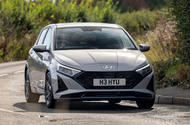
Hyundai turns on the style – just a little – for its third-generation Polo chaser
The previous generation of the Hyundai i20 proved that a meat-and-potatoes kind of supermini could sell well even in style-savvy Europe.But that was 10 years ago and this is now, and in that time Hyundai has become quite a different company. It has long moved away from bargain-basement cars, and that’s paying dividends. Its sales are flying at the moment, the firm posting year-on-year growth in sales and market share.As part of that evolution, the kinds of cars Hyundai sells has also changed: 75% of Hyundai Motor UK’s 2023 sales were SUVs. In other words, that means that the i10, i20, i30 and Ioniq 6 put together account for just 25%.So where does that leave the i20 hatchback, which has just had a mild facelift for 2024? In Europe, at least, it’s no longer the important model that it once was. And to an extent, that’s reflected in how limited this update is, with some mild visual changes and a rationalised engine line-up.The i20 may no longer be the driver of sales that it once was, but superminis still have an important role to play in keeping people mobile and building brand loyalty. And anyway, there’s often something joyful about a small, simple and relatively light car.The i20 line-up at a glanceThe most notable change for the facelifted i20 is the thinning out of the powertrain line-up in the UK. It has been reduced to just one engine: a 1.0-litre turbo triple, with either a normal six-speed manual or a seven-speed dual-clutch auto. It’s unclear whether the Hyundai i20 N hot hatch will make a return.There are three trim levels: Advance, Premium and Ultimate. Advance is somewhat meanly equipped, while Ultimate could be quite excessive, but Premium offers a nice middle ground.
Source: Autocar